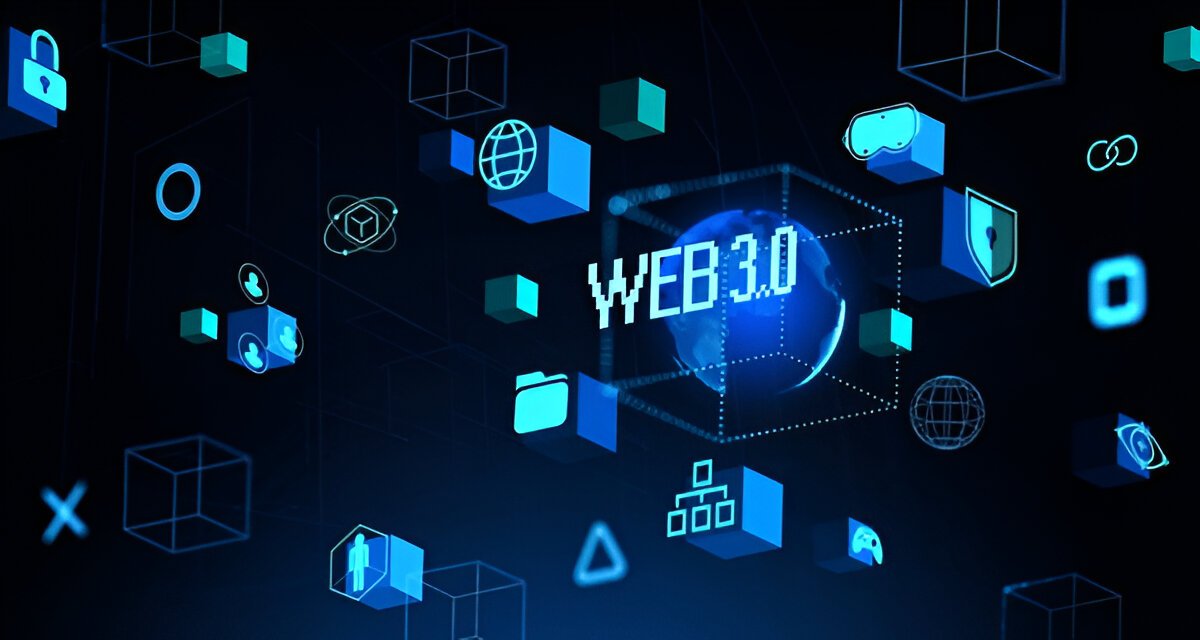Web 3.0
The Rise of Web3
In recent years, the digital landscape has been evolving
at an unprecedented pace. Among the most significant
developments is the emergence of Web3—a decentralized,
blockchain-powered iteration of the internet that
promises to revolutionize how we interact with digital
ecosystems. But what exactly is Web3, and why is it
generating so much buzz? In this first edition of "Tech
Trends with Mulsan,"
we explore the rise of Web3 and how it’s poised to
reshape the future of digital ecosystems.
What is Web3?
Web3, often referred to as the "decentralized web,"
represents the third generation of internet services.
Unlike Web1, which was characterized by static web pages,
and Web2, which brought dynamic content and user-generated
platforms, Web3 is all about decentralization. It
leverages blockchain technology to create an internet
where users have more control over their data, privacy,
and digital assets. In a Web3 world, traditional
intermediaries like banks, social media platforms, and
online marketplaces are being replaced by decentralized
applications (dApps) that operate on peer-to-peer
networks. This shift is not just a technological upgrade;
it’s a paradigm shift that empowers users and challenges
existing business models.
Key Web3 Trends
As Web3 continues to gain traction, several key trends are
emerging that are worth noting:
1. Decentralized Applications (dApps)
dApps are at the heart of the Web3 movement. Unlike
traditional apps, apps run on blockchain networks, making
them more secure, transparent, and resistant to
censorship. From finance to gaming, dApps are transforming
industries by eliminating the need for centralized control
and enabling peer-to-peer transactions.
2. Non-Fungible Tokens (NFTs)
NFTs have taken the digital world by storm, offering a new
way to own and trade digital assets. Whether it’s art,
music, or virtual real estate, NFTs are redefining
ownership in the digital age. As businesses and creators
explore this space, NFTs are expected to play a crucial
role in the Web3 economy.
3. Decentralized Finance (DeFi)
DeFi platforms are revolutionizing the financial industry
by offering decentralized alternatives to traditional
banking services. From lending and borrowing to trading
and insurance, DeFi enables users to engage in financial
activities without intermediaries, offering greater
accessibility and transparency.
4. Interoperability
Interoperability between different blockchains is a
growing trend that’s crucial for the success of Web3. As
multiple blockchain networks emerge, the ability for them
to communicate and interact seamlessly will be essential
for creating a cohesive decentralized ecosystem.
5. Governance Tokens
Governance tokens are empowering users to have a say in
the direction of decentralized platforms. By holding these
tokens, users can vote on key decisions, influencing the
development and policies of the platforms they use. This
democratization of decision-making is a core principle of
Web3.
The Impact on Industries
The rise of Web3 is not confined to the tech sector alone;
it’s poised to disrupt a wide range of industries:
1. Finance
The financial sector is arguably the most impacted by
Web3, with DeFi leading the charge. Traditional banks and
financial institutions are being challenged by
decentralized platforms that offer faster, cheaper, and
more transparent services. This shift is forcing
incumbents to rethink their strategies and adapt to the
new landscape.
2. Entertainment
In the entertainment industry, NFTs are enabling artists,
musicians, and content creators to monetize their work in
new ways. By selling digital collectibles or tokenizing
their creations, they can reach a global audience and earn
revenue directly from fans, without relying on
intermediaries.
3. Supply Chain
Web3 technologies are also being applied to supply chain
management, where transparency and traceability are
critical. By using blockchain to track goods from origin
to destination, companies can ensure product authenticity,
reduce fraud, and improve efficiency.
4. Healthcare
In healthcare, Web3 could revolutionize the way patient
data is stored and shared. Decentralized systems can
provide secure, tamper-proof records that are accessible
only by authorized individuals, ensuring privacy while
improving care coordination.
Your Guide to the Web3 Revolution
As the digital world transitions to Web3, businesses must
adapt to stay competitive. At
Mulsan IT, we are at the forefront of this revolution, offering
innovative Web3 marketing and blockchain development
services to help our clients navigate the decentralized
future.
Our team of experts is committed to delivering tailored
solutions that meet the unique needs of your business.
Whether you’re looking to integrate blockchain technology,
launch a dApp, or tap into the potential of NFTs, we’re
here to guide you every step of the way.
The Future of Web3
The potential of Web3 is immense, but we’re only
scratching the surface. As technologies evolve and
adoption grows, Web3 will likely become the foundation of
a new digital economy—one that is more inclusive,
transparent, and user-centric.
At
Mulsan IT, we believe that the future belongs to those who are
willing to embrace change and innovate. We invite you to
join us on this exciting journey into the world of Web3.
Let’s build the future together.
If you’re interested in exploring how Web3 can benefit
your business, contact
Mulsan IT
today. Together, we can unlock the full potential of
decentralized technology and set your business up for
success in the new digital era.
